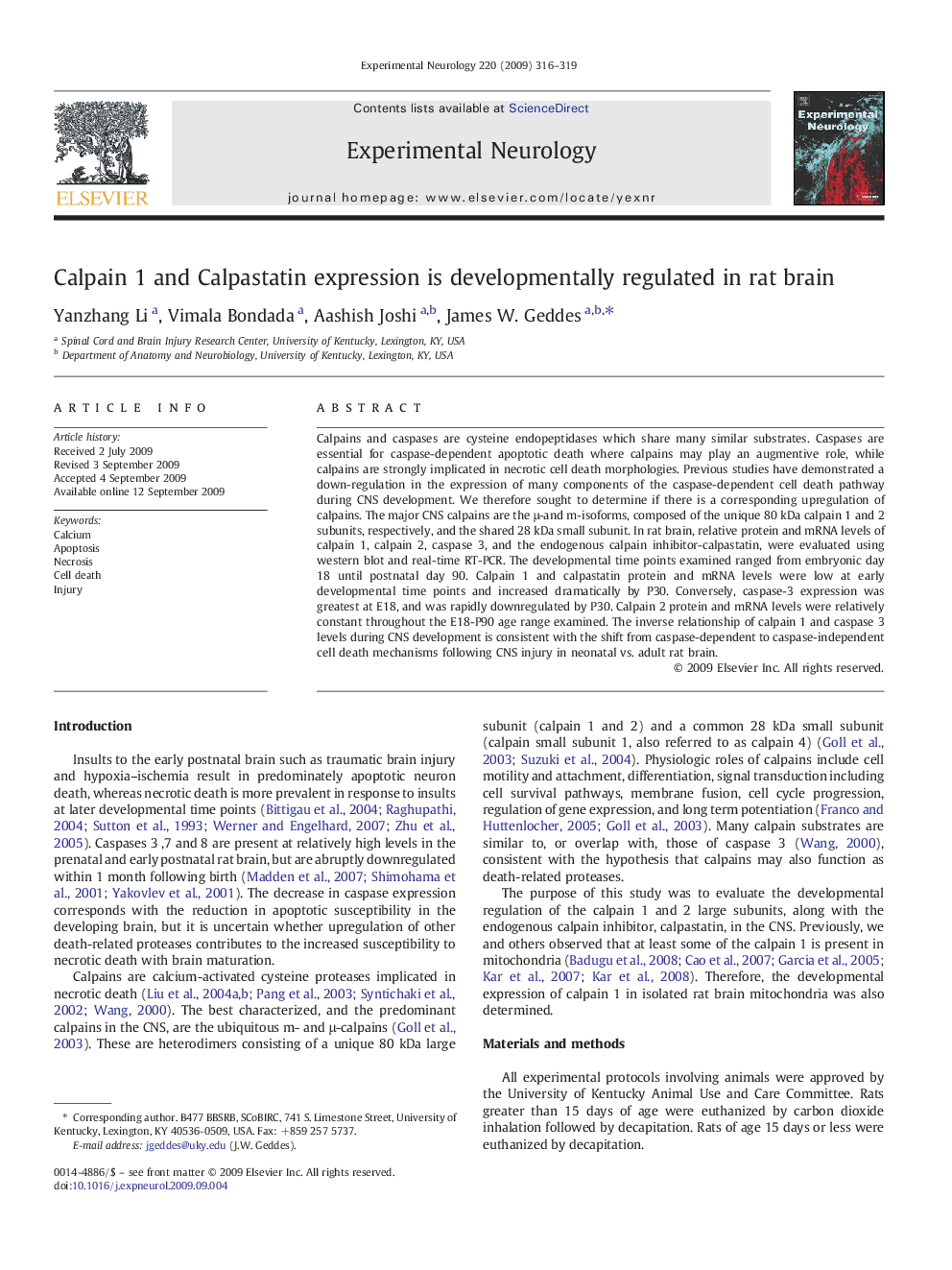| Article ID | Journal | Published Year | Pages | File Type |
|---|---|---|---|---|
| 3056116 | Experimental Neurology | 2009 | 4 Pages |
Calpains and caspases are cysteine endopeptidases which share many similar substrates. Caspases are essential for caspase-dependent apoptotic death where calpains may play an augmentive role, while calpains are strongly implicated in necrotic cell death morphologies. Previous studies have demonstrated a down-regulation in the expression of many components of the caspase-dependent cell death pathway during CNS development. We therefore sought to determine if there is a corresponding upregulation of calpains. The major CNS calpains are the μ-and m-isoforms, composed of the unique 80 kDa calpain 1 and 2 subunits, respectively, and the shared 28 kDa small subunit. In rat brain, relative protein and mRNA levels of calpain 1, calpain 2, caspase 3, and the endogenous calpain inhibitor-calpastatin, were evaluated using western blot and real-time RT-PCR. The developmental time points examined ranged from embryonic day 18 until postnatal day 90. Calpain 1 and calpastatin protein and mRNA levels were low at early developmental time points and increased dramatically by P30. Conversely, caspase-3 expression was greatest at E18, and was rapidly downregulated by P30. Calpain 2 protein and mRNA levels were relatively constant throughout the E18-P90 age range examined. The inverse relationship of calpain 1 and caspase 3 levels during CNS development is consistent with the shift from caspase-dependent to caspase-independent cell death mechanisms following CNS injury in neonatal vs. adult rat brain.
